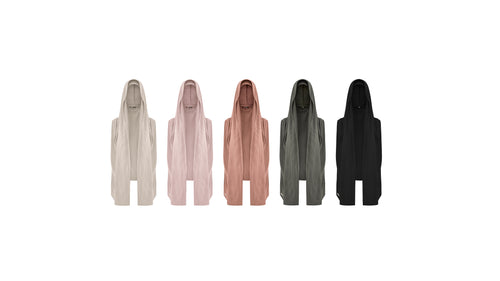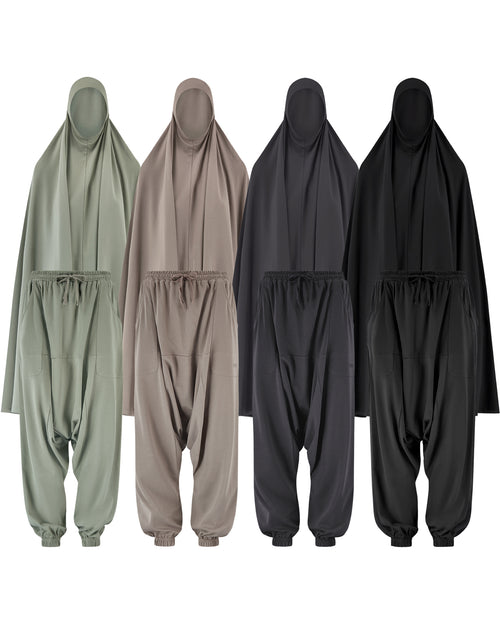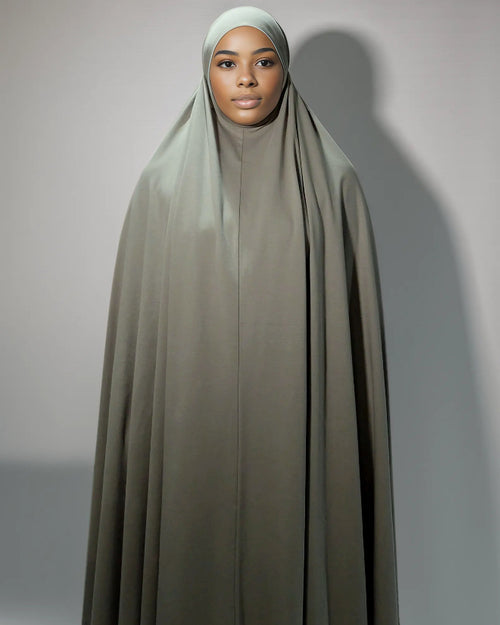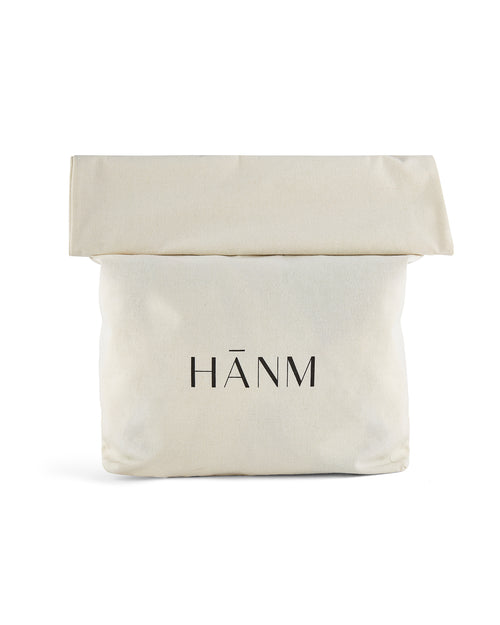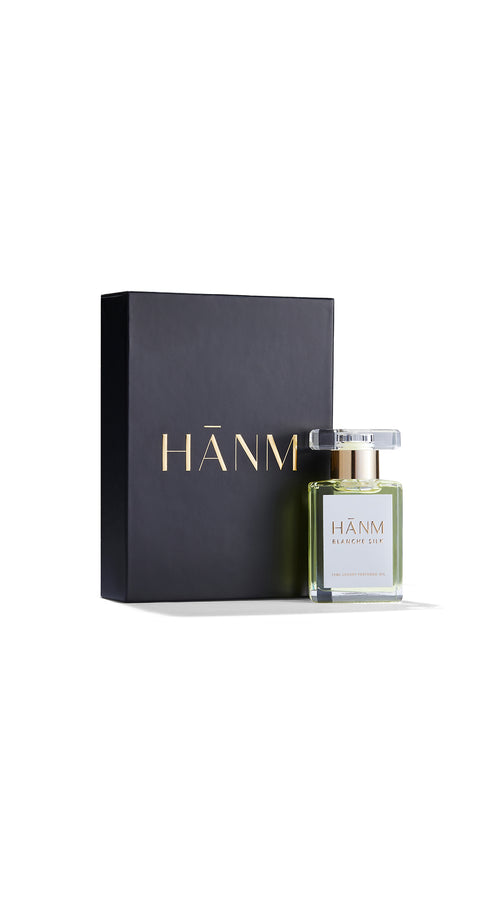Natural fabrics are woven using a process called weaving, which involves interlacing two sets of yarns or threads at right angles to create a fabric. There are many different weaving techniques that can be used to create different qualities of fabrics. Here, we will show you a simplified 5-step process of how our natural hijab fabrics at HĀNM are woven by our skilled workers.

1. Preparation: The first step is to prepare the yarns or threads that will be woven. These yarns are made from natural fibres such as cotton, linen, silk, or wool. In the above image, we show our raw, sustainably sourced cotton process. As you can see on the far left is the raw cotton, which is run through our machines several times until they reach their desired thickness as threads before being spun into yarns.
In the case of cotton, for example, the fibres are twisted together to form a continuous thread and create extra strength within the threads.

2. Warping: In this step, the vertical threads, known as the warp yarns, are prepared. The warp yarns, which run lengthwise in the fabric, are wound onto a beam called a warp beam. This involves measuring and aligning the yarns parallel to each other, ensuring they have the desired tension and spacing.

3. Threading: The warp yarns are then threaded through a set of metal eyes or loops called heddles. The heddles are attached to a frame called a loom. Threading involves passing each warp yarn individually through a heddle, which creates a pattern known as the warp pattern.
Once the warp yarns are threaded, the heddles are raised or lowered in a specific sequence. This creates an opening called a shed between the upper and lower sets of warp yarns. The shed allows the weft yarns to be passed through the warp yarns.

4. Weaving: The weft yarn, also known as the filling yarn, is passed through a conventional looming machine. The weft yarn is interlaced with the warp yarns in a specific pattern. Different patterns, such as plain weave, twill weave, or satin weave, can be created by varying the interlacement sequence of the weft and warp yarns.
After each weft yarn is inserted, it is beaten into place using a comb-like tool called a beater. The beater ensures that the weft yarn is tightly packed against the previous weft yarns, creating a solid fabric structure. This can be seen in our image above of our worker holding on to the beater.
This is repeated continuously until the desired length of fabric is achieved. The weaver maintains the tension of the warp yarns and ensures the pattern is followed correctly.

5. Finishing: Once the weaving is complete, the fabric is removed from the loom and undergoes various finishing processes such as washing, dyeing, or printing to enhance its appearance and properties.
Above is an example of our herringbone weave from our sugarcane collection, which has been beautifully woven by our skilled workers. It is then transferred to our printing department where our exclusive designs are digitally printed on to the fabric, ready to be cut and sewn into the HĀNM hijabs you know and love.

